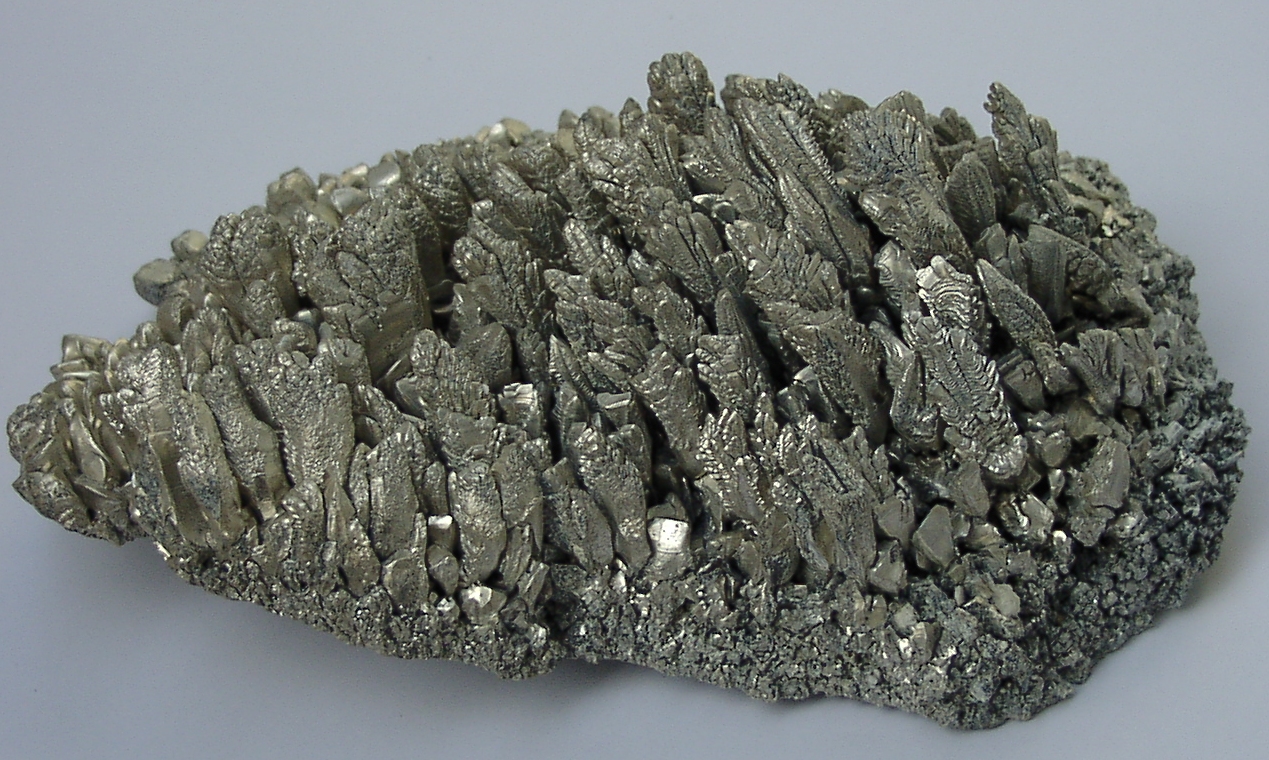French: Magnésium
Spanish: Magnesio
Portuguese: Magnésio
The name is from the Greek word "Magnesia", a district Thessaly.
Portuguese: Magnésio
The name is from the Greek word "Magnesia", a district Thessaly.
3. I have 12 protons and 12 nuetrons.
Naturally occurring isotopes:
| Isotope | Atomic mass (ma/u) | Natural abundance (atom %) | Nuclear spin (I) | Magnetic moment (μ/μN) |
|---|---|---|---|---|
| 24Mg | 23.9850423 (8) | 78.99 (4) | 0 | 0 |
| 25Mg | 24.9858374 (8) | 10.00 (1) | 5/2 | -0.85546 |
| 26Mg | 25.9825937 (8) | 11.01 (3) | 0 | 0 |
| Isotope | Mass | Half-life | Mode of decay | Nuclear spin | Nuclear magnetic moment |
|---|---|---|---|---|---|
| 22Mg | 21.999574 | 3.86 s | EC to 22Na | 0 | |
| 23Mg | 22.994124 | 11.32 s | EC to 23Na | 3/2 | 0.536 |
| 27Mg | 26.984341 | 9.45 m | β- to 27Al | 1/2 | |
| 28Mg | 27.983876 | 21.0 h | β- to 28Al | 0 | |
| 29Mg | 28.98855 | 1.3 s | β- to 29Al | 3/2 |
 My average atomic mass is 24.3050g.
My average atomic mass is 24.3050g.4. I have 12 electrons and I have 3 shells of electrons.

5. 1 pm = 1 x 10-12 metre (meter)
My atomic radius in meters is value of 145pm.
6. Magnesium is a highly flammable metal, but while it is easy to ignite when powdered or shaved into thin strips, it is difficult to ignite in mass or bulk. Once ignited, it is difficult to extinguish, being able to burn in nitrogen (forming magnesium nitride), carbon dioxide (forming magnesium oxide and carbon) and water (forming magnesium oxide and hydrogen).

7. Mg24 - 24 g(0.7807) = 18.7368 g
Mg25 - 25 g(0.1010) = 2.525 g
Mg26 - 26 g (0.1120) = 2.912 g
Average: Mg = 24.1738
Mg25 - 25 g(0.1010) = 2.525 g
Mg26 - 26 g (0.1120) = 2.912 g
Average: Mg = 24.1738
Abundance in the Earth's crust: 29000000 ppb by weight.
Abundance in Universe: 600000 ppb by weight.
8. The Compounds I from:
- Magnesium dichloride: MgCl2
- Magnesium dihydride: MgH2
- Magnesium oxide: MgO
- Magnesium peroxide: MgO2
- Magnesium sulphide: MgS
- Trimagnesium dinitride: Mg3N2

9. Magnesium was discovered by Sir Humphrey Davy at 1755 in England. It was isolated by Davy in 1808 who electrolysed a mixture of magnesia (magnesium oxide, MgO) and mercuric oxide (HgO). Davy's first suggestion for a name was magnium but the name magnesium is now used.
10. My uses are:
Magnesium is an important element for plant and animal life. Chlorophylls are porphyrins based upon magnesium. The result of aqueous ignition of a mixture of magnesium metal with silver nitrate with water can be very dangerous.

11. Magnesium is the eighth most abundant element in the earth's crust although not found in it's elemental form. It is a Group 2 element (Group IIA in older labelling schemes). Group 2 elements are called alkaline earth metals. Magnesium metal burns with a very bright light. Magnesium is required for the proper working of some enzymes. The adult daily requirement of magnesium is about 0.3 g day-1.
Reference: http://www.webelements.com/






No comments:
Post a Comment